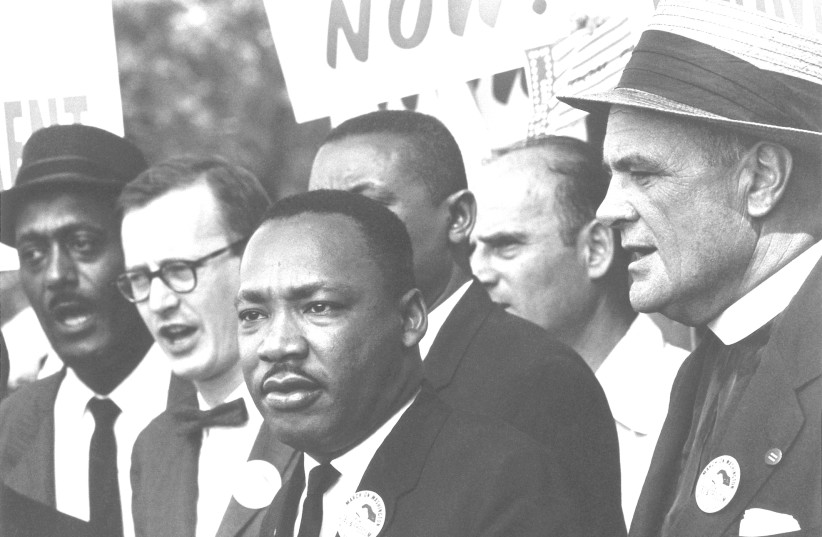Critical race theory is a major topic in the education sector in the US and has been one of the driving issues behind the midterm elections.
The term itself, often abbreviated as CRT, actually dates back to the 1960s and 1970s, and refers to a method to examine American society through the lens of race.
Over the years, CRT has seen increasing use in schools across the US. However, this has in turn led to massive backlash.
But what exactly is critical race theory? What are its principles? Where is it taught? What are the arguments for and against it? How is it playing a role in the US midterm elections?
Here is everything you need to know.

What exactly is critical race theory?
Critical race theory (CRT) technically refers to the method of examining how laws and social and political trends shape and are shaped by views on race. This can be done in a number of ways, such as intersectionality and storytelling.
However, the term is most commonly used to refer to the educational method of CRT used in schools.
Here, it is essentially an education method infused with ideas that deal with race and law. It teachs how racism and the legacy of slavery and oppression continue to pervade American culture and society and see this oppression continue on a systemic level.
There is a number of factors backing this up, too. Whether or not one argues the level of systemic racism in the US today, the fact is that it was very much real in the past. One's race was a determining factor on whether one could buy property, had access to law enforcement and government support and so on.
Neighborhoods were made and districted to ensure racial segregation. Schools were separated on racial lines. Employers would be more reluctant to hire anyone who wasn't white. A massive wealth gap divided on racial lines still exists today.
It is these topics that are often the focus of CRT in schools.
However, opponents of CRT tend to be less specific in what they define as CRT. Rather, it seems to be aimed at any education surrounding teaching about racism and racial equity.
Why did critical race theory become controversial? What are the arguments against CRT?
Critical race theory became a major controversy following the 2020 racial justice protests in the US, sparked by the death of George Floyd.
The protests brought renewed public attention to racial inequality in the US, emphasized in a number of forms, most specifically in police racism and how people of color protesting are seen and treated compared to white people protesting.
Commonly used arguments against critical race theory are as follows:
- Critical race theory is unpatriotic, anti-American and anti-White
- Critical race theory engages in brainwashing and indoctrination for children and goes against conservative values
- Critical race theory focuses on dark and divisve parts of history and does not focus on the positive achievements
- Different perspectives or neutrality are not shown
- Past racial injustices are shown as if they were still occurring
- Shows some races as being superior or more privileged, racist, sexist or oppressive on either a conscious or unconscious level
- Critical race theory teaches people must feel guilty, uncomfortable or in distress because of their race
- That the idea of a meritocracy is inherently racist or sexist
- That American society is fundamentally, irredeemably or systemically racist
- That it teaches races or sexes have inherent morals, values, privileges and character traits
Whether any of these arguments hold any merit whatsoever is a matter of skepticism and debate. But regardless, it has resulted in fierce debate throughout the US among both politicians and the public.
Where is critical race theory taught?
Despite popular belief, critical race theory is actually only taught in universities in the US. However, elements of CRT have been found in high schools, middle schools and elementary schools.
However, throughout 2021 and 2022, widespread bans and limits on critical race theory have been placed throughout the US, mostly by Republicans. This also saw federal funding pulled from CRT programs.
This has led to less teaching about slavery, Jim Crow oppression of people of color in the South and even Holocaust and antisemitism education.
How has critical race theory impacted the US midterm elections?
While its importance has been winding down ever since the Republican primaries concluded, critical race theory is still a GOP talking point in the bid to win over support and get out the vote ahead of the crucial US midterm elections.
These can still be seen on the campaign platforms for Republican gubernatorial candidates or some in the House and Senate.
These are less about critical race theory on its own, however. Rather, they seem to have blended into other major issues about education, such as gender identity, sexual orientation, religious values and, especially in New York's hassidic yeshiva schools, governmental overreach.
In at least some cases, such as in New York, focusing on school issues has seen Republican candidates get more support.
How this will factor into the results of the US midterm elections, however, remains to be seen.
Tzvi Joffre contributed to this report.
